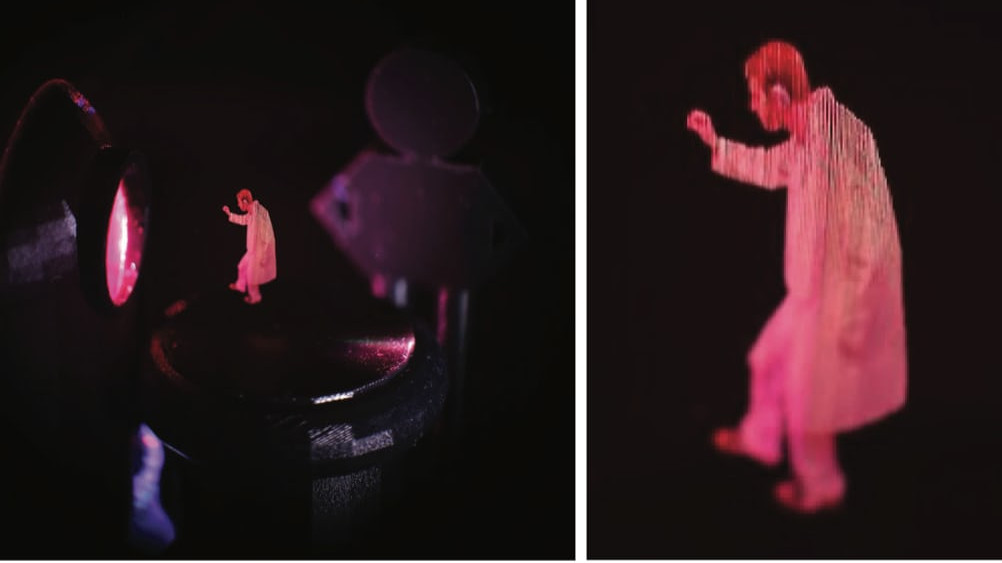Inspired by movies like Iron Man and Star Wars, researchers from Brigham Young University in Utah have developed a breakthrough in ”free-space volumetric display”. This holographic method is capable of creating full-color graphics in thin air using particles in space.
When sci-fi fanatics gather around to imagine the future of 3D printing technology, most probably conjure up visions of the Star Trek Replicator, a machine that can produce anything from pure energy. But not all three-dimensional fantasies have to result in a physical object, sometimes the power of light is enough to get the message across.
If you’re a true diehard Star Wars fan, you can definitely recall with crystal clear clarity the scene where R2D2 projects a holographic message from Princess Leia saying the famous line, “Help me Obi Wan Kenobi, you’re my only hope”. A group of researchers from Brigham Young University in Utah recently reported a breakthrough with the first creation of a “free-space volumetric display”.
Daniel Smalley, a BYU electrical and computer engineering professor and holography expert, and his research group are on a mission to take 3D displays that were once only possible in science fiction and making them real. Admittedly inspired by films like Star Wars and Iron Man, the process enables the team to create 3D images in the air.
What we often call holograms are in fact “free-space volumetric display”, which can create colorful graphics in thin air. Although the BYU study focuses on a relatively complex process, Smalley explains in laymen’s terms that the display is basically a 3D printer that works with light. He adds that they’re essentially printing an object using particles in space. This method results in floating “3D prints” that are visible from any direction.

Creating the Free-Space Volumetric Display
To help you understand this advanced technique, let’s dive a bit deeper into this holographic phenomena. As the lead researcher explains, free-space volumetric displays are based on photophoretic optical trapping.
“You capture a particle in an invisible, or almost invisible ‘tractor beam’, then you drag that around to every point of an image. When it’s in the right place, you shoot it with red, green and blue lasers to make it illuminate, and build up an image point by point, dragging this cellulose particle around as you go,” Smalley said to the Guardian.
Unlike holographic displays, the free-space volumetric displays aren’t subject to clipping, which can restrict overall utility. The difference between a holographic display and a volumetric one is that holograms only manage to scatter light across a 2D surface. This means that if you’re not looking at that surface, you won’t see the image. On the other hand, a volumetric display can be seen from any angle as it has little scattering surfaces throughout a 3D space which the image occupies.
As impressive as this feat is, the BYU research team still has a lot of work to do. Currently, the images are either too small or too slow to create. Thus far, they’ve been able to produce a simple spiral that is only a couple of millimeters high. Larger or more detailed images would only be able to be photographed with a long exposure shot.
However, Smalley believes that his team will overcome these issues, claiming that adding more particles to a display could lead to a potential solution.
The research team recently published their findings in the paper “A photophoretic-trap volumetric display,”
which is published in the academic journal Nature.
Source: Science Daily
License: The text of "Sci-Fi Becomes Reality: Researchers Create “Floating 3D Prints” with Free-Space Volumetric Display" by All3DP is licensed under a Creative Commons Attribution 4.0 International License.